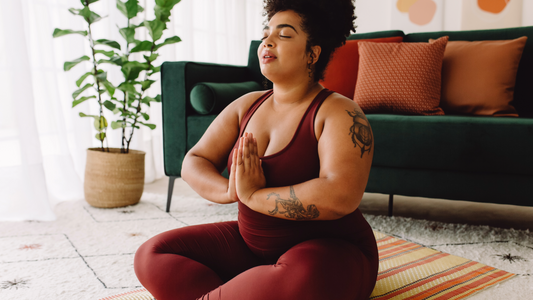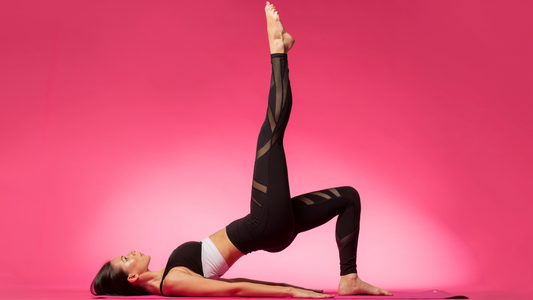Yoga and flexibility training are a dynamic duo that can significantly enhance your physical and mental well-being. Yoga, an ancient practice that originated in India, is not just about striking elegant poses or contorting your body into shapes; it's a holistic approach to health that integrates flexibility, strength, balance, and mindfulness. In this in-depth exploration, we will dive deeper into the symbiotic relationship between yoga and flexibility, understanding how they work together to improve your overall health.
Contents:
Section 1: The Synergy of Yoga and Flexibility
Section 2: Benefits of Yoga for Flexibility
Section 3: Starting Your Yoga Journey
Section 4: Yoga Routine for Flexibility and Relaxation
The Synergy of Yoga and Flexibility
Yoga is a multifaceted discipline that fosters flexibility through a combination of elements, including:
- Asanas (Yoga Poses): Yoga comprises a diverse array of asanas, each designed to target specific muscle groups and joints. These poses encompass stretches, twists, and bends, allowing you to gradually increase your range of motion.
- Stretching with Mindfulness: Yoga involves deliberate stretching in conjunction with mindfulness. The combination of mindful movement and controlled breathing encourages relaxation, enabling your muscles to extend and your joints to open up without the risk of overstretching or injury.
- Balancing Strength and Flexibility: Yoga strives to create a balance between strength and flexibility, which is crucial for maintaining a harmonious and agile body. The emphasis on balance and alignment ensures that as you become more flexible, you also become stronger.
Benefits of Yoga for Flexibility
Understanding the profound effects of yoga on flexibility will inspire you to incorporate it into your regular fitness routine:
- Expanded Range of Motion: Over time, yoga increases the flexibility of your joints and muscles, enabling a wider range of motion in your body. Everyday activities become more comfortable, and you become less susceptible to injuries caused by stiffness.
- Improved Posture: Yoga corrects posture by identifying and rectifying imbalances in muscle strength and flexibility. By strengthening weaker muscles and stretching overused ones, it helps alleviate chronic pain and prevents further issues.
- Enhanced Balance and Stability: Yoga enhances balance and stability by engaging the core muscles and improving proprioception. Proprioception is the body's ability to perceive its position in space, making you less prone to falls and accidents.
- Mental Flexibility and Stress Reduction: While yoga focuses on physical flexibility, it equally nurtures mental flexibility. The meditative aspects of yoga promote relaxation, reducing stress and anxiety, and helping you stay calm and focused in your daily life.
Starting Your Yoga Journey
Embarking on your yoga journey is an exciting and rewarding endeavour. Here's how to get started:
- Choose Your Yoga Style: There is an array of yoga styles, each with its unique emphasis. Hatha yoga, Vinyasa, and Iyengar are suitable for beginners. Select the one that aligns with your goals and preferences.
- Utilise Props: Yoga props like blocks, straps, and bolsters are invaluable tools for easing into poses and making your practice more accessible.
- Practice Regularly: Consistency is vital for progress. Aim for 2-3 yoga sessions per week, gradually building up your practice to experience the full benefits of increased flexibility.
- Listen to Your Body: Always pay attention to your body's signals during your practice. Yoga is a journey, and forcing a pose or pushing too hard can lead to injury. Flexibility improves over time with patience and mindfulness.
Yoga Routine for Flexibility and Relaxation
Here's a simple yet effective yoga routine that you can include in your daily routine. This routine focuses on enhancing flexibility and promoting relaxation.
Note: Perform each pose mindfully, and remember to breathe deeply throughout the routine.
1. Child's Pose (Balasana)
Child's Pose gently stretches the hips, thighs, and lower back while providing a soothing, calming effect.
- Begin in a kneeling position with your big toes touching and knees hip-width apart.
- Sit back on your heels, extending your arms forward on the floor.
- Rest your forehead on the mat and relax in this gentle stretch for 30 seconds to 1 minute.
2. Downward-Facing Dog (Adho Mukha Svanasana)
Downward Dog stretches the hamstrings, calves, and shoulders, while also helping to lengthen and strengthen the spine.
- Start on your hands and knees in a tabletop position.
- Lift your hips towards the ceiling, straightening your legs and forming an inverted V shape.
- Press your hands into the ground and engage your core while looking towards your navel.
- Hold for 30 seconds to 1 minute.
3. Triangle Pose (Trikonasana)
Triangle Pose stretches the hamstrings, hips, and opens the chest, improving overall flexibility.
- Stand with your feet wide apart, one foot pointing forward and the other foot at a 90-degree angle.
- Extend your arms out to the sides, reaching towards your front foot.
- Gently lower your front hand to your shin or the floor, while raising your other hand towards the sky.
- Maintain a straight line from your hand to your heel and hold for 30 seconds on each side.
4. Seated Forward Bend (Paschimottanasana)
The Seated Forward Bend stretches the entire back of your body, including the spine, hamstrings, and calves, while calming the mind.
- Sit with your legs extended straight in front of you.
- Inhale, lengthen your spine, and exhale as you fold forward, reaching for your feet.
- Hold onto your shins, ankles, or feet, depending on your flexibility.
- Stay in the pose for 30 seconds to 1 minute.
5. Pigeon Pose (Eka Pada Rajakapotasana)
Pigeon Pose is a deep hip opener that enhances hip flexibility and relieves tension in the lower back.
- Start in a tabletop position and bring one knee forward, placing it behind your wrist.
- Slide your other leg straight back behind you.
- Square your hips and lower your upper body toward the ground, using props or cushions for support if needed.
- Hold the pose for 30 seconds to 1 minute on each side.
6. Corpse Pose (Savasana)
Corpse Pose is a crucial part of any yoga routine, promoting relaxation, reducing stress, and allowing your body to absorb the benefits of your practice.
- Lie flat on your back, with your arms and legs extended.
- Close your eyes, relax your entire body, and focus on your breath.
- Stay in Savasana for at least 5 minutes, allowing your body and mind to completely unwind.
Incorporating this yoga routine into your daily or weekly fitness regimen can greatly enhance your flexibility and promote relaxation. Remember to perform each pose mindfully, paying attention to your body's signals, and breathing deeply throughout the routine. Over time, you'll experience increased suppleness, better posture, and a greater sense of well-being through the practice of yoga.
Conclusion
The integration of yoga and flexibility training is an enriching journey that encompasses physical and mental transformation. By incorporating yoga into your fitness regimen, you can explore the bliss of a more flexible, agile, and balanced body, all while reducing stress and nurturing inner peace. Whether you're a newcomer or an experienced yogi, the path to greater flexibility is a lifelong exploration through the practice of yoga, guiding you towards a healthier and more harmonious life.



